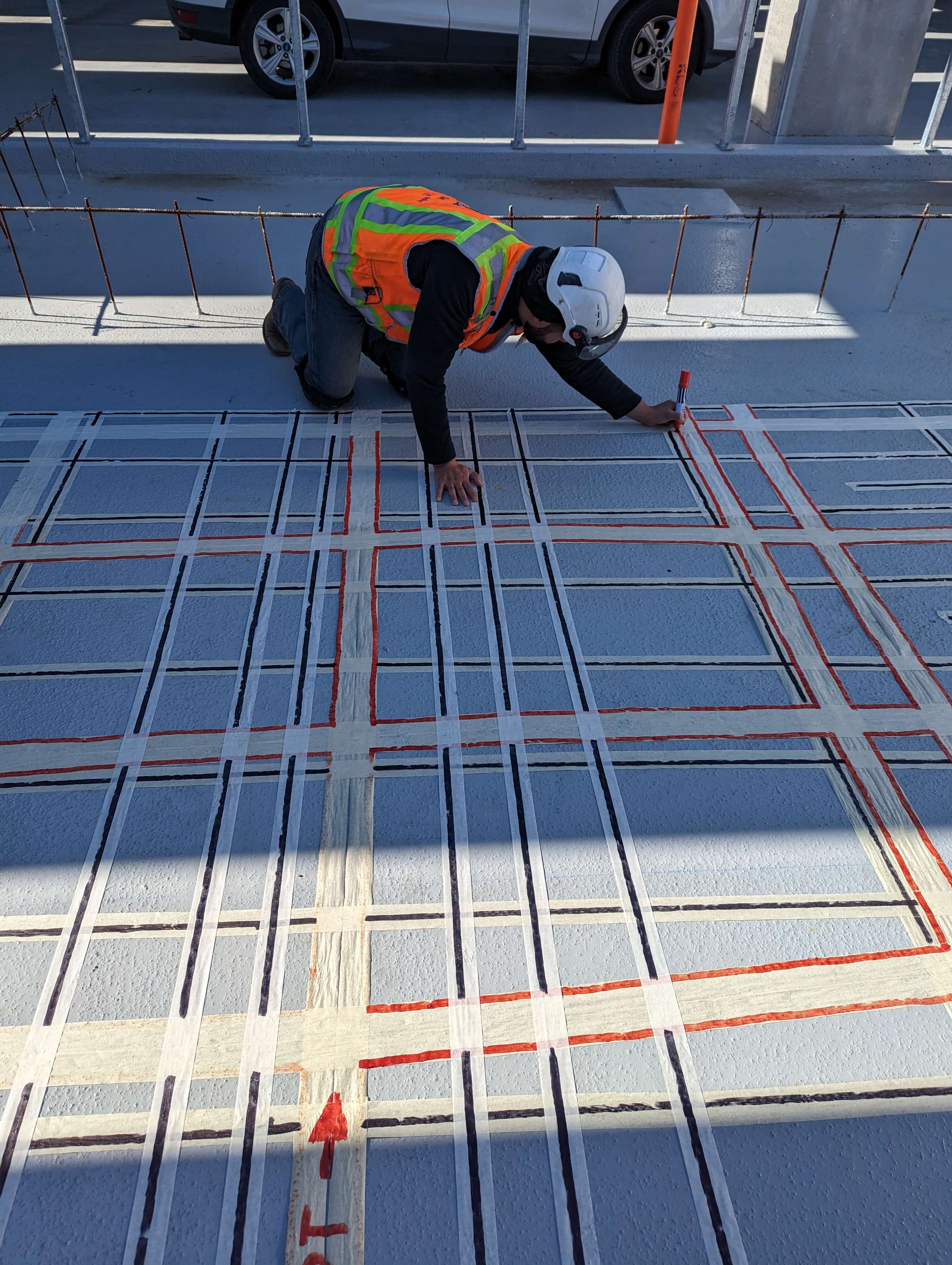Efficient Concrete Scanning Approaches for Construction Projects
Wiki Article
Beyond the Surface: Leveraging Advanced Concrete Scanning Techniques for Unmatched Accuracy and Insight
In the realm of construction and infrastructure maintenance, the quest for accuracy and thoroughness is endless. Advanced concrete scanning techniques have arised as important devices in this quest, supplying a peek underneath the surface area to unveil a world of essential insights. By taking advantage of innovative technologies, specialists can uncover abnormalities, evaluate the problem of concrete structures, and make educated decisions that form the program of tasks. The effects of these methods extend much past simple surface-level analyses, guaranteeing a deepness of accuracy and understanding that is unmatched.Importance of Advanced Concrete Scanning
The relevance of utilizing sophisticated concrete scanning techniques depends on the unrivaled precision they offer for identifying sub-surface anomalies and making certain structural integrity. By utilizing advanced technologies such as ground-penetrating radar (GPR), electro-magnetic induction, and progressed sonar imaging, building and construction specialists can dig under the surface area of concrete structures with a level of precision that much goes beyond standard inspection approaches. Concrete Scanning. These techniques enable the recognition of covert dangers like rebar deterioration, gaps, channels, or post-tension cables that can jeopardize the security and safety and security of a structure with timeFurthermore, advanced concrete scanning supplies indispensable understandings right into the overall condition of a concrete component without the demand for intrusive measures, minimizing the risk of creating damages throughout the evaluation procedure. The ability to pinpoint the specific place and depth of possible concerns permits targeted repair services and maintenance, ultimately lengthening the life expectancy of the structure and optimizing its efficiency. Basically, the relevance of advanced concrete scanning can not be overstated in the realm of building and framework maintenance, where precision and integrity are extremely important.
Sorts Of Cutting-Edge Technologies

Abnormalities and Defect Discovery

In enhancement to GPR, concrete scanning methods like thermography and impact-echo testing are also effective in discovering flaws and abnormalities. By click to read leveraging these innovative methods, professionals can proactively address architectural problems, guaranteeing the longevity and safety and security of concrete structures.
Assessing Concrete Condition
How can designers precisely assess the condition of concrete frameworks to guarantee their durability and safety and security? Evaluating the concrete condition is an essential facet of preserving framework stability. Numerous sophisticated concrete scanning strategies are utilized for this objective. Ground-penetrating radar (GPR) is generally used to examine the internal framework of concrete, identifying gaps, splits, and various other abnormalities that might compromise its toughness. Additionally, impact-echo testing can offer understandings into the density and integrity of concrete elements. Ultrasonic pulse rate testing is another beneficial technique for examining concrete quality by gauging the speed of acoustic waves via the product.Furthermore, aesthetic examination stays a fundamental component of concrete problem assessment. Designers visually check out the surface for indicators of wear and tear, such as spalling, breaking, or staining. Integrating non-destructive screening techniques with aesthetic assessments permits for a thorough analysis of concrete problem, allowing designers to determine potential concerns at an early stage and carry out prompt upkeep or repairs. By leveraging these sophisticated methods, engineers can guarantee the long-lasting toughness and safety of concrete structures.
Enhancing Decision-Making Processes
In the world of infrastructure administration, optimizing decision-making procedures is imperative for making certain the reliable upkeep and longevity of concrete structures. Boosted decision-making procedures in concrete administration involve making use of innovative scanning techniques to gather detailed information on the condition of frameworks. By leveraging innovations such as ground-penetrating radar and 3D imaging, stakeholders can make educated decisions concerning reinforcement, replacement, or repair service methods.These advanced scanning strategies supply find out vital understandings right into the internal composition of concrete, determining potential problems such as voids, this contact form fractures, or rust that may not show up externally. This level of comprehensive details enables proactive upkeep planning, decreasing the threat of architectural failings and enhancing the overall life expectancy of concrete frameworks.
In addition, by incorporating electronic documents and analysis devices into the decision-making process, stakeholders can track the advancement of concrete problems with time, enabling anticipating maintenance strategies and optimizing resource appropriation. Inevitably, the integration of advanced concrete scanning methods boosts decision-making procedures by providing unrivaled accuracy, understanding, and performance in facilities management.
Verdict
Finally, advanced concrete scanning techniques use unequaled accuracy and insight in discovering abnormalities, defects, and assessing the condition of concrete structures. By leveraging sophisticated modern technologies, decision-making processes can be boosted, leading to even more efficient and informed options for preserving and fixing concrete infrastructure. These strategies play an essential role in ensuring the safety and long life of concrete frameworks, making them an indispensable tool in the field of building and construction and engineering.Furthermore, advanced concrete scanning offers vital understandings right into the general problem of a concrete component without the need for intrusive procedures, lessening the threat of triggering damages during the analysis process - Concrete Scanning. One more cutting-edge modern technology is 3D X-ray scanning, which offers thorough pictures of the inner structure of concrete, supplying useful information without the demand for harmful testing. Additionally, Concrete Cover Meters are made use of to determine the thickness of concrete cover over reinforcement bars accurately. Improved decision-making processes in concrete management include using advanced scanning methods to gather thorough information on the problem of structures.In verdict, progressed concrete scanning methods supply exceptional precision and understanding in detecting anomalies, defects, and analyzing the problem of concrete structures
Report this wiki page